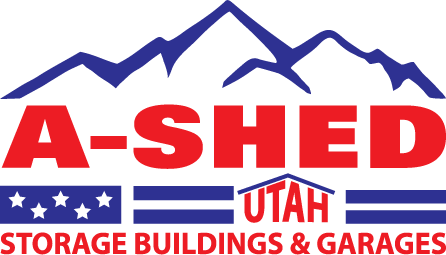 Get A Free Quote
Get A Free Quote Get A Free Quote
Get A Free QuoteIn part one of this two-part blog series, we went over some of the initial factors to consider when it comes to the framing and spacing of your new storage shed. This area is just as important as the materials used in many cases, defining the basic shape and structure of a shed and laying the foundation for a long lifespan.
At A-Shed USA, we provide a wide variety of custom storage sheds, all built with a combination of high-quality materials and professional framing and spacing qualities. Let’s look at a few additional factors that play a role in the framing concerns of a given shed or custom structure, including some you may not have considered before your purchase.
One of the single most common areas that dishonest contractors will skimp on when it comes to shed building is the nails. They’re leaning on an expected lack of knowledge from clients here: Most assume standard steel nails will do just fine for a given shed or structure, but this actually isn’t the case.
In reality, there are chemicals in pressure-treated lumber (often found in your floors – more on this in just a moment) that will cause steel nails to rust and wear down over time. For this reason, quality shed builders use galvanized nails instead. These are a bit pricier, to be sure, but they provide a high level of quality and do not risk rusting or any form of corrosion when exposed to pressure-treated wood.
Speaking of pressure treatment, it’s vital for the floor of a given shed that sits on the ground. When using non-treated lumber here, major risks of rot and insect invasion are present, negatives that can badly impact the lifespan of the structure.
While most manufacturers use at least some pressure-treated wood, you want to be sure this is the case throughout your new shed. Some will look to save money by using non-treated lumber for floor joists while using treated wood only on the perimeter, but this risks rot on the joists that you’ll have to deal with.
All windows, doors and other openings on a given shed should have a frame built the entire way around them, plus a proper header. These items are in place to provide support – without them, these openings may sag or collapse over time.
Finally, quality sheds include ties that span rafter to rafter every few feet. The purpose of span ties is to help the roof hold up against any weight placed on it, particularly snow during the Utah winter. Without these ties, your shed may do fine during the summer – but then may collapse the first time heavy snow rests on it, creating damage and a major hassle.
For more on important spacing and framing factors to inquire about for your new shed, or to learn about any of our custom sheds or garage-building services, speak to the staff at A-Shed USA today.